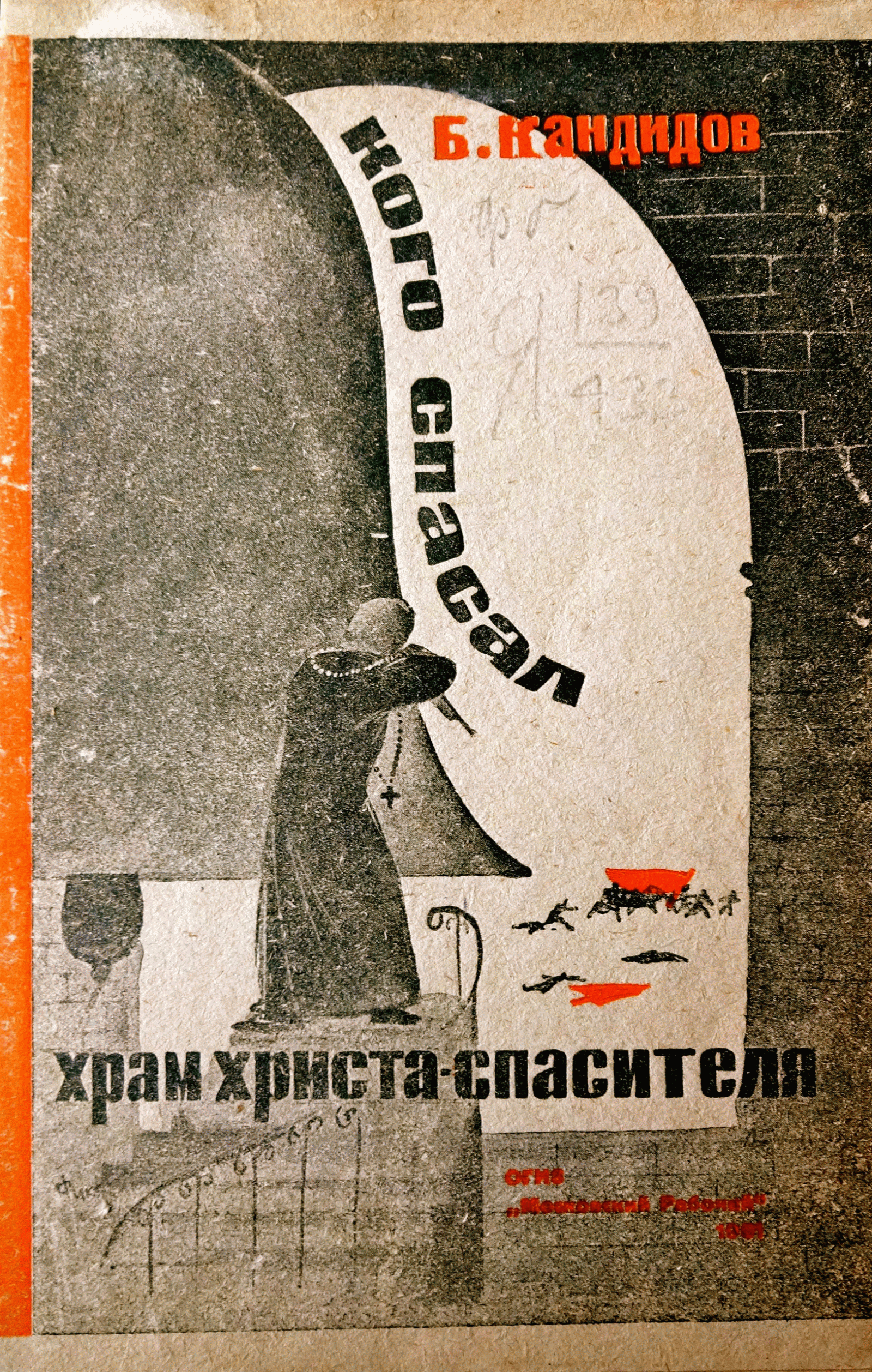Research
“The future is our only goal”. Soviet Imaginaire and the Past
Federica Rossi

Cover of "Kogo spasal Chram Christa Spasitelya" (Who saved the temple of Christ the Savior) by B. Kandidov, , Moskovskyi rabocyi, Moscow 1931
The project aims to study the future of the past, the destruction of monuments, as well as the conservation of heritage and of the Soviet imaginaire 102 years after the October Revolution. It will investigate, on the one hand, modes of survival and of enhancing the cultural past, and on the other, the new cultural rhetoric, in an era of radical change in politics, society and culture, as was the case in post-1917 Russia/URSS. We refer back to the debate between the avant-garde and the classicists in the years 1920-1930, with the aim of historicizing and in some ways overcoming this dichotomy and interpretive scheme.
The Soviet artistic and architectural culture between the 1910s and the 1930s was quite multifaceted, but it has only been for the last 25 years, after the collapse of the Soviet Union, that we have been able to study it in a new way, aiming to bring together histories that differ in language and, even more, because of their different historiographic cultures. We now have access to documents that show its complex relationship with the West, with the local past, and with religion, which the Soviet historiography that followed had tried to obliterate. Only recent publications of sources, diaries, and the rediscovery of material buried in the archives have started to give to us a different frame, on which this project seeks to reflect.


